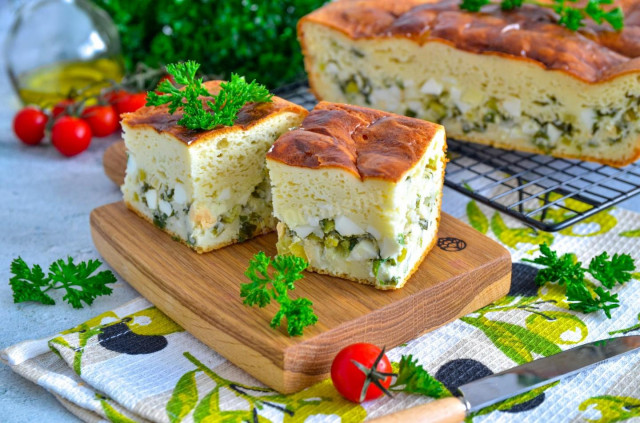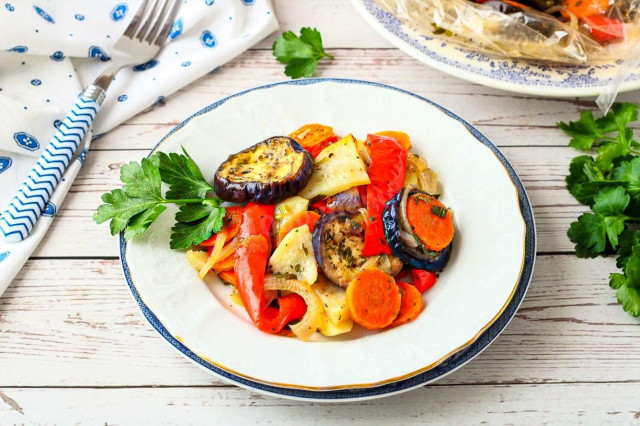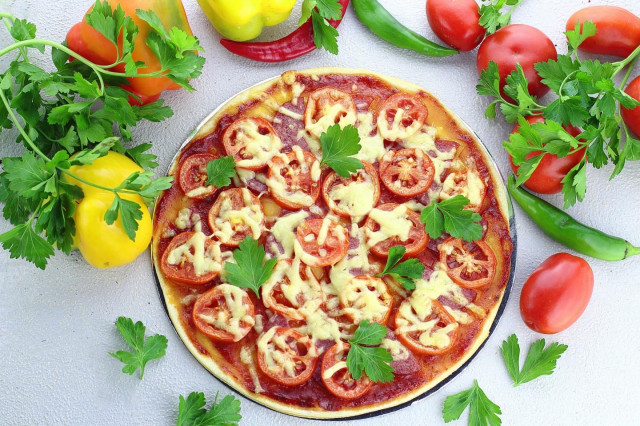Composition / ingredients
Step-by-step cooking
Step 1:
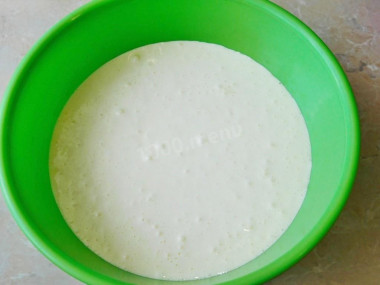
How to make a Delicate Cake? Prepare the products. Beat the eggs into a deep bowl. Add sugar to them and whisk at maximum speed until fluffy.
Step 2:
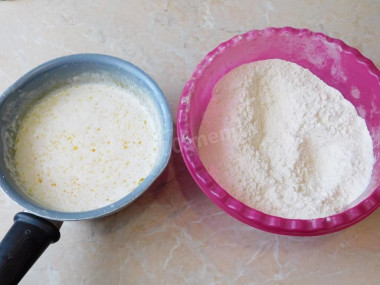
Pour the milk into a saucepan, combine with butter and bring to a boil. Hold it on the fire so that the oil completely melts. Sift the flour through a fine sieve and combine with starch, soda and vanilla.
Step 3:

Mix in the egg mass, alternately adding flour and milk mixture. Knead the dough by hand, using a whisk to preserve the splendor that appeared from the beaten eggs.
Step 4:

Pour the finished dough into a detachable baking dish (20 cm) and put it in the oven, preheated to 180 degrees, for about 45-60 minutes. Be guided by your oven. The finished biscuit springs a little when pressed and returns to its original shape.
Step 5:
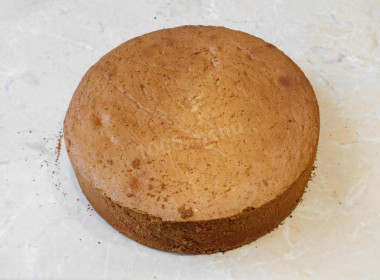
Remove the finished biscuit from the mold and cool completely. Then wrap it in plastic wrap and put it in the refrigerator for a few hours. During this time, he will rest and will be well cut into cakes. The biscuit turns out to be quite high, so it can be cut into 4 cakes.
Step 6:
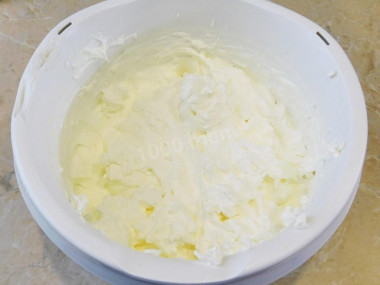
To prepare the cream, combine cold heavy cream with powdered sugar and whisk until a fluffy, stable cream. The fat content of the cream should be at least 33%. Otherwise they won't climb.
Step 7:

Set aside 1/3 of the cream from the cream. Mix the remaining 2/3 of the cream with soft cottage cheese, rubbed through a sieve. In the cottage cheese, add a little cream of cream and mix it by hand, with a whisk.
Step 8:
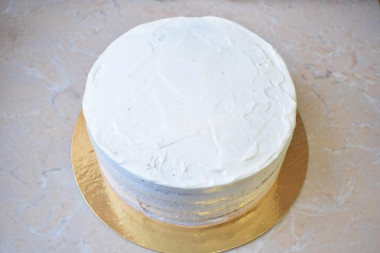
Soak the sponge cakes with sugar syrup or (so that there are fewer calories) just water. Layer the cakes with cottage cheese cream and assemble the cake.
Step 9:

Smear the top and sides of the cake with cream from the cream that was originally left. Decorate the finished cake according to your taste and skill. Before serving, let the cake stand in the refrigerator for several hours. But it is best to leave it to freeze overnight. Have a nice tea party!
You can add any fruit or berries to the filling of such a cake. Bananas, strawberries, peaches or pineapples are perfect.
Be prepared for the fact that you may need more or less flour than indicated in the recipe. Focus not on the amount of flour, but on the desired consistency of the dough. To avoid mistakes, read about flour and its properties!
Keep in mind that everyone's ovens are different. The temperature and cooking time may differ from those specified in the recipe. To make any baked dish successful, use useful information about the features of ovens !
Caloric content of the products possible in the composition of the dish
- Whole cow's milk - 68 kcal/100g
- Milk 3.5% fat content - 64 kcal/100g
- Milk 3.2% fat content - 60 kcal/100g
- Milk 1.5% fat content - 47 kcal/100g
- Concentrated milk 7.5% fat content - 140 kcal/100g
- Milk 2.5% fat content - 54 kcal/100g
- Chicken egg - 157 kcal/100g
- Egg white - 45 kcal/100g
- Egg powder - 542 kcal/100g
- Egg yolk - 352 kcal/100g
- Ostrich egg - 118 kcal/100g
- Cottage cheese of 40% fat content - 466 kcal/100g
- Cottage cheese of 20% fat content - 233 kcal/100g
- Cottage cheese of 18% fat content - 226 kcal/100g
- Cottage cheese of 10% fat content - 156 kcal/100g
- Low-fat cottage cheese - 75 kcal/100g
- Cottage cheese with sour cream - 260 kcal/100g
- Fruit cottage cheese - 147 kcal/100g
- Soft dietary cottage cheese - 170 kcal/100g
- Vitalinia cottage cheese - 64 kcal/100g
- Cottage cheese "morning" ( "danone") without sugar - 91 kcal/100g
- Cottage cheese - 156 kcal/100g
- Whole durum wheat flour fortified - 333 kcal/100g
- Whole durum wheat flour, universal - 364 kcal/100g
- Flour krupchatka - 348 kcal/100g
- Flour - 325 kcal/100g
- Granulated sugar - 398 kcal/100g
- Sugar - 398 kcal/100g
- Starch - 320 kcal/100g
- Butter 82% - 734 kcal/100g
- Amateur unsalted butter - 709 kcal/100g
- Unsalted peasant butter - 661 kcal/100g
- Peasant salted butter - 652 kcal/100g
- Melted butter - 869 kcal/100g
- Cream 35% - 337 kcal/100g
- Cream 40% - 362 kcal/100g
- Vanillin - 288 kcal/100g
- Powdered sugar - 374 kcal/100g
- Baking soda - 0 kcal/100g





